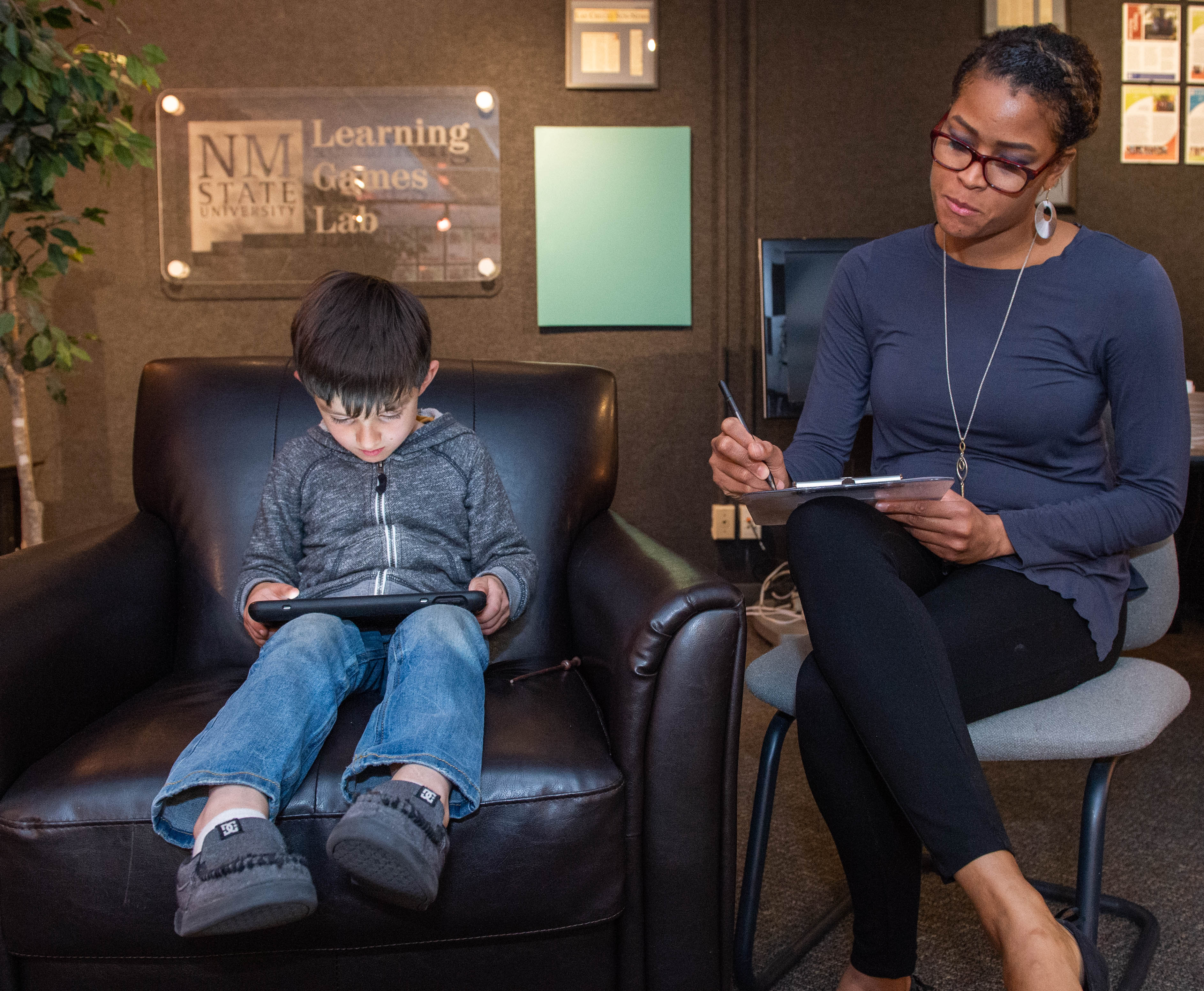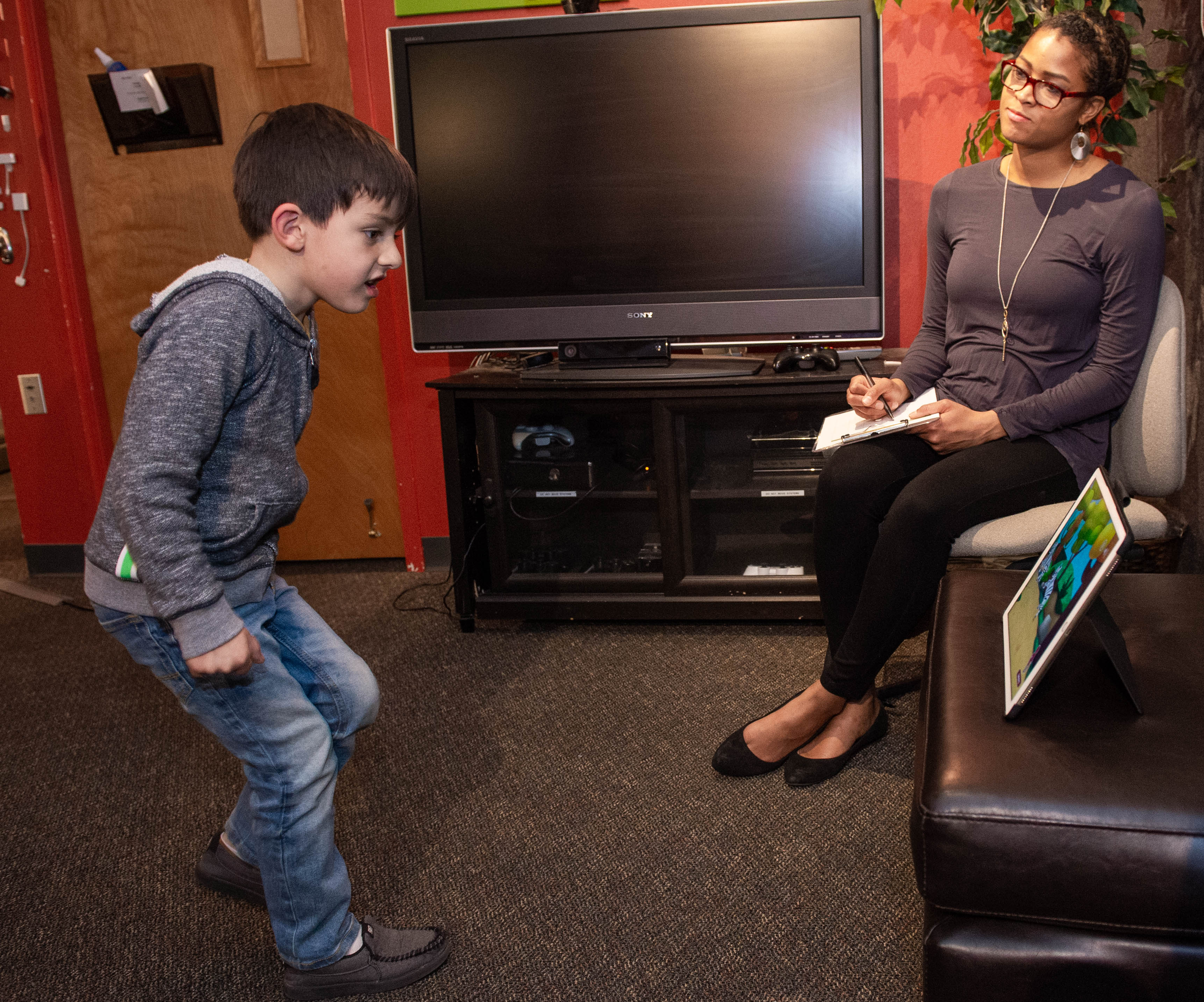NMSU design studio creates educational technology for national, international audiences


Visitors walking into the Learning Games Lab inside Gerald Thomas Hall on the New Mexico State University campus will initially notice what looks like a small group of video game designers quietly working on designs and code for the next hit video game.
In reality, they’re working on several games and projects, sometimes up to 20 at a time, that will help users across the country learn more about various topics ranging from food safety to math to how government works.
The Learning Games Lab is part of the Department of Innovative Media Research and Extension in the College of Agricultural, Consumer and Environmental Sciences. The department’s games, videos and apps have been accessed more than 92 million times since 2011, including more than 60 million views on YouTube and 6.3 million gameplays on the web in 2018 alone. Faculty in the department collaborate with experts across the U.S. to create educational tools not only for K-12 and college students, but also for adult learners and industry professionals. Each project is research-based, and most projects are funded by grants.
In 1982, Innovative Media Research and Extension department head Jeanne Gleason started producing videos in the department, creating a new focus on digital media for Extension and the college.
“Our impact has really been global, as we’ve continued development with touch-screen kiosks, websites, animations, games and apps,” Gleason said. “I never imagined we would be reaching so many different people with so many different kinds of educational content.”
The lab also offers several week-long learning programs to youth as part of their outreach and research. This past summer, they worked with middle and high school students in creating game design pitches based on the problems they want to solve in the world. The project gives students a glimpse into game development and design while helping them demonstrate empathy toward difficult topics. Their work is being expanded to a curriculum for use nationwide in informal learning environments.
Other games lab programs give learners a chance to create other types of media, and provide feedback on games, animations and virtual labs developed by the studio.
“The game lab participants are identifying a change and exploring how you create that change, just as our game designers do,” said Amanda Armstrong, Learning Games Lab session coordinator and a doctoral student in the Department of Curriculum and Instruction at NMSU.
The lab has recently completed several other projects, including a suite of four apps for tasting behaviors and physical activity aimed at pre-school children, a Navajo Rangeland app for identifying plants in English and Navajo, and a project involving a series of interactive labs that will help children learn about water reclamation. They’ve also posted a series of tools to help college students explore how chemistry is related to agricultural sciences.
This fall, they’ll release a game on the different branches of government and the role each plays in preventing disease outbreaks, such as those related to foodborne illness. They will soon begin work with other partners in the College of ACES to create new learning tools on insect science, and new animations on several different concepts in science.
“Sometimes we’ll have 15 to 20 projects on rotation, but we’re working on eight projects now,” said Pamela Martinez, who oversees the production of games, websites and digital media for Innovative Media Research and Extension.
One of the projects that is most commonly associated with the Learning Games Lab is Math Snacks, a suite of games, animations and teaching materials funded by the National Science Foundation that focuses on often misunderstood math concepts for students in grades 5-8. Research has found that games make a significant impact on students’ understanding of math concepts when the games are added to classroom instruction. Like most of the products developed by the studio, Math Snacks games have been used nationally. In 2018 alone, games and programs developed by the studio were played nine million times.
Developing games isn’t the only focus of the Learning Games Lab. It also explores how technology can garner the best user experiences. For example, two summers ago lab staff and faculty worked with Facebook developers on their popular Messenger app to help design the best social experiences for children.
“We’re a nonprofit design studio based on university research,” said Barbara Chamberlin, director of the Learning Games Lab. “Research tells us what content we need to address, how to best design the tools we create, and the impact of what we’ve developed.”
For more information about the Department of Innovative Media Research and Extension, visit learninggames.nmsu.edu.


